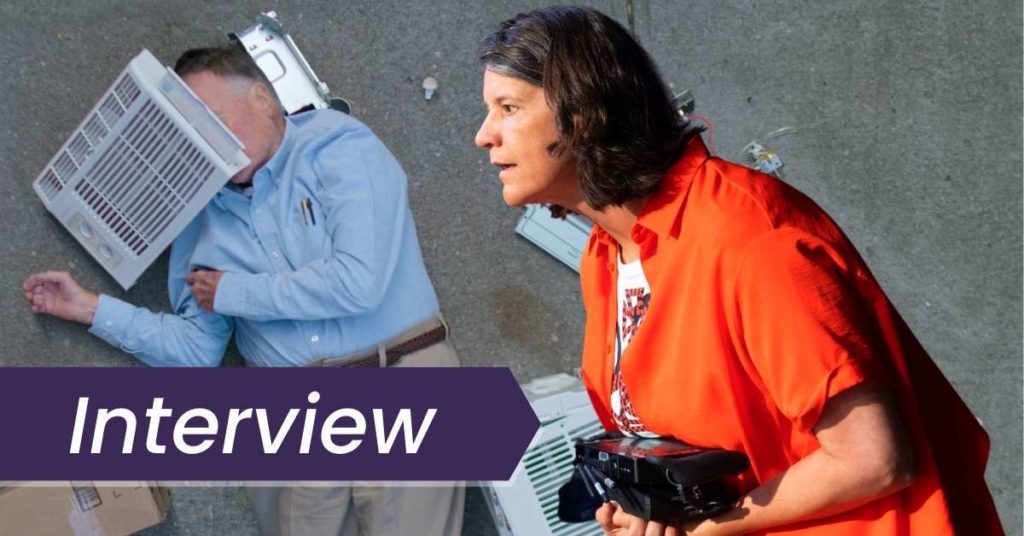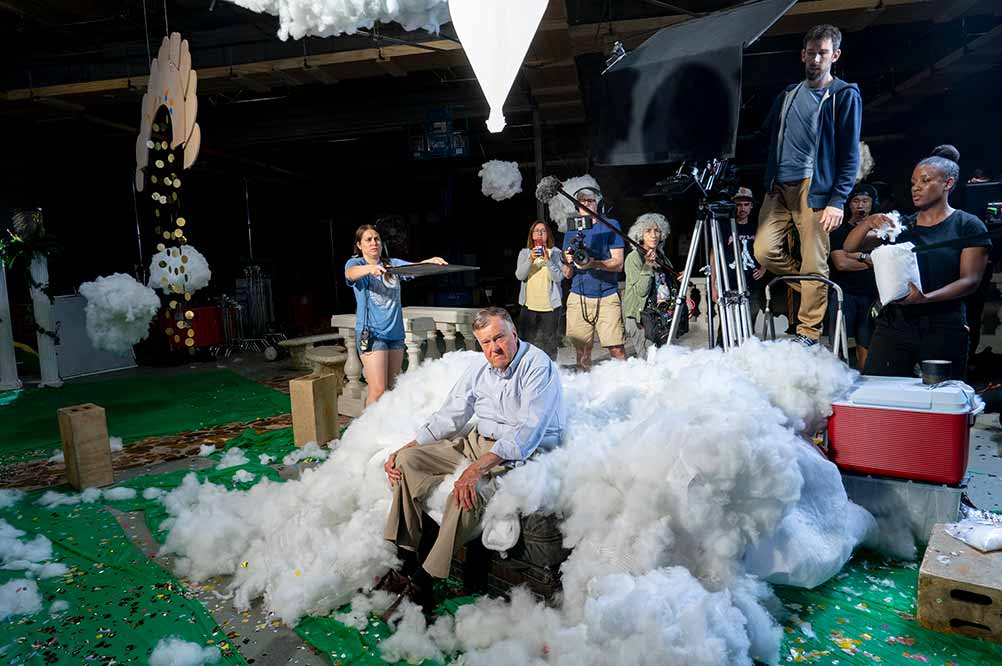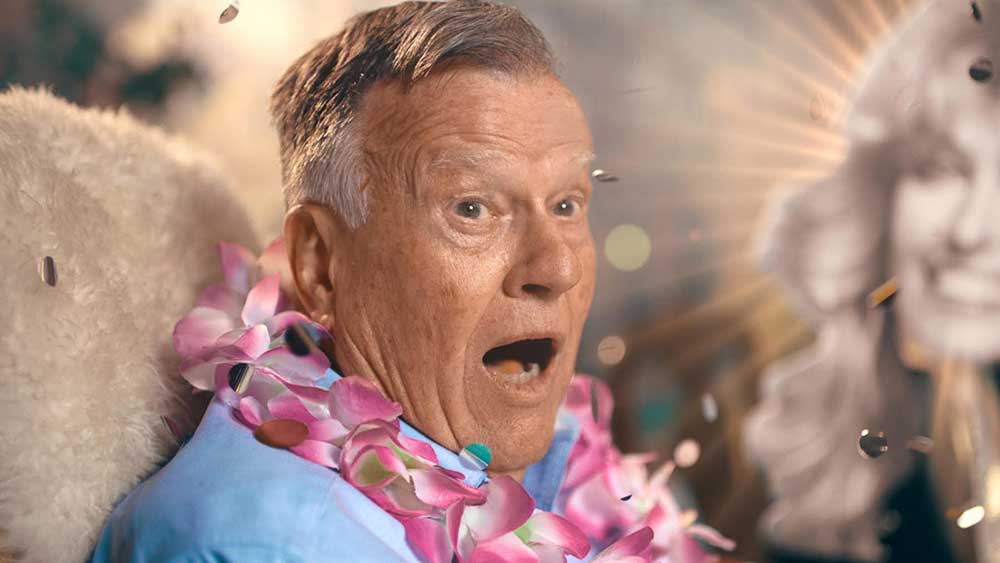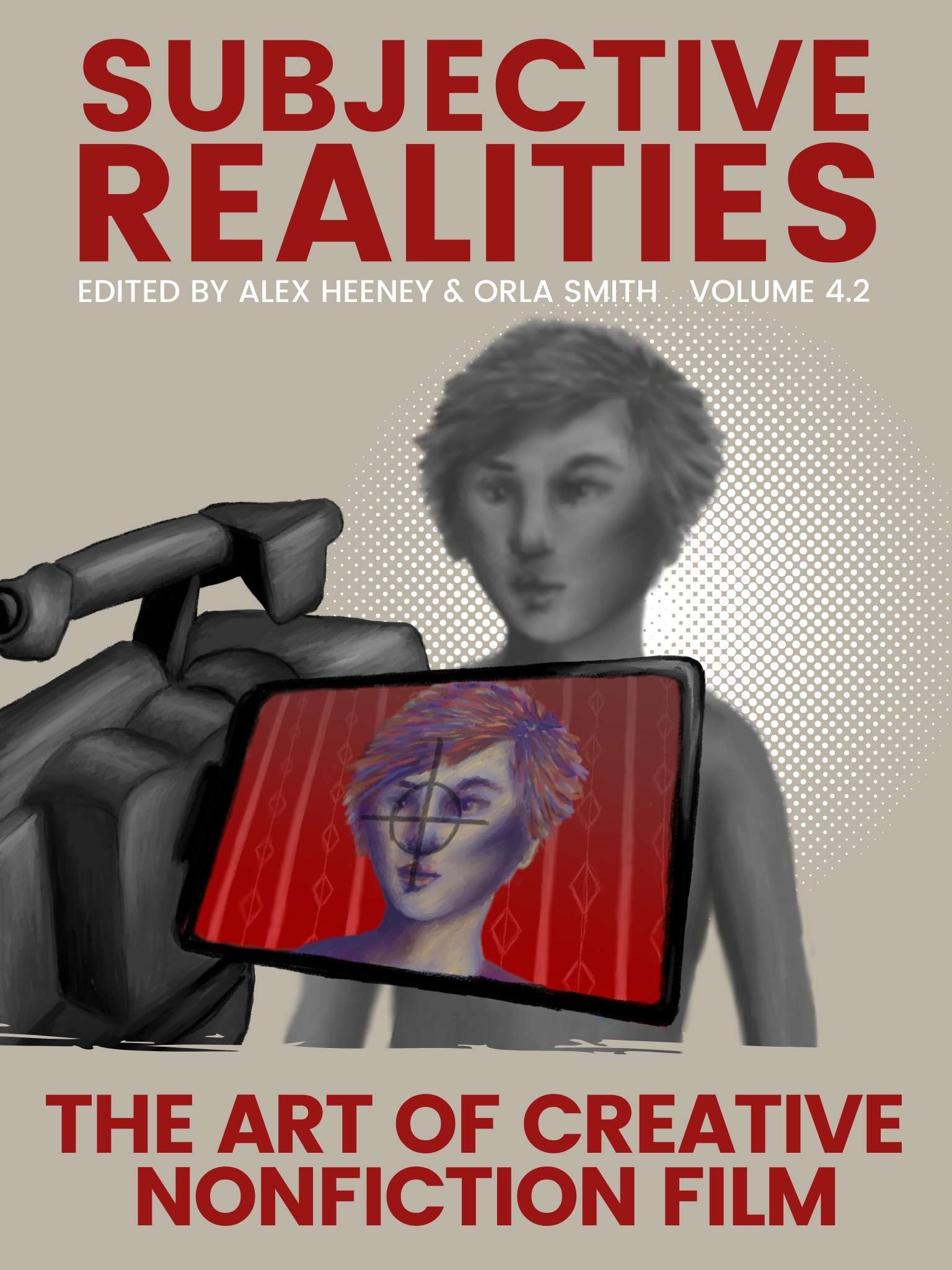Kirsten Johnson discusses Dick Johnson is Dead, her surreal documentary about her father’s dementia, and how it made her think differently about life and death. The film is now on Netflix.

In Kirsten Johnson’s Cameraperson, she cut together a collage of outtakes from her 20 years as a documentary cinematographer, including footage of subjects ranging from Edward Snowden to survivors of war-torn Bosnia and Herzegovina. Johnson herself is rarely glimpsed on screen, but we feel her behind the camera, making choices about when and how to shoot scenes that range from the banal to the horrific. Cameraperson is a study in documentary ethics and the role of the voyeur who drifts into someone else’s life and trauma, captures it, and then leaves it behind.
Johnson’s latest film as director, Dick Johnson is Dead, is a bracingly frank self-portrait in which she turns the camera on herself and her titular father, a jovial psychiatrist who has just been diagnosed with dementia. It’s also an absurdist comedy: in between vérité scenes of father and daughter spending time together, the pair attempt to cheat death by staging Dick’s death over and over again, with the help of stunt performers. One of the first scenes sees Dick walking absentmindedly on the street, only to be struck on the head by an air conditioner falling from an apartment window. In another, he falls down the stairs of his home and lies motionless at the bottom. As morbid as these scenarios are, Johnson brings levity to them by revealing the process by which they were staged. We see a woman explaining how a fake blood dispenser works, a stunt man enthusiastically pitching various causes of death, and Johnson and her father chatting and laughing together behind the scenes.
Johnson is constantly pulling the rug out from under us so we question the images we’re watching; she’s unafraid of highlighting how ‘documentary’ cinema curates and redesigns real life just as much as fiction films do.. For example, the film starts out with conventional voiceover narration but eventually cuts to footage of Johnson in her closet recording that voiceover, sometimes doing multiple takes to try out different intonations. In doing so, she gives a physical form and fallibility to the omniscient narrator. This is reemphasised when we see her recording narration about her father’s death as if it’s in the past, only for her to open the closet door to her smiling and very-much-alive father.
The film is full of little surprises like this that question how we think about death, especially when a disease like dementia takes a person slowly over the course of many years. In a later scene, Johnson presents Dick’s funeral as if it’s real, but then cuts to Dick himself watching the staged-for-the-cameras funeral through a window in the church door. His presence brings levity to a sombre scene; Dick is still here to witness his loved ones celebrating his life. But this jars with the image that follows: one of Dick’s best friends, Ray, who spoke at the funeral, sobs in the corner of the lobby. Dick may not be dead yet, but Ray is still grieving the impending loss of his friend’s mind, soon to be followed by his body.
Dick Johnson is Dead is both the film it is and a film about its own making rolled into one. Johnson doesn’t let a single frame pass without revealing her motivations — selfish or selfless — for capturing it. She features on screen her conversations with Dick (who is very much a collaborator in the project) and with his healthcare workers about whether or not to embark on the project. We witness Johnson deliberating over what to do before she calls off a roadside stunt when her father becomes confused and scared by the fake blood and the nearby traffic. In one moment, Johnson even states aloud that she’s being paid to do this — something I don’t think I’ve ever seen declared so bluntly in a documentary before.
I spoke with Kirsten Johnson over the phone about Dick Johnson is Dead, documentary sound design, finding a label for her film, and how she’s always “searching for ways to include that truth that usually gets left out.”
Seventh Row (7R): I typically start interviews by asking a director about the genesis of their project, but what’s so cool about Dick Johnson is Dead is I don’t need to do that. You’re very upfront about the how and why you made the film in the film itself.
Kirsten Johnson: (laughs) Exactly, I stole that question from you! I love that you got that. That is often a question one is asked when one makes a film. A thing has emerged that is unexpected, so the question is, where did this come from? I always think that ideas come from many sources. In many ways, this film is still a mystery to me.
7R: One of my favourite things about Dick Johnson is Dead is that the film reveals its own process. You’re constantly peeling back layers of artifice: you include footage of yourself recording the film’s narration; you talk about the fact that you’re being paid to do this. Why was it important for you to do that?
Kirsten Johnson: Life is process. We often set ourselves up to think that things are fixed or things in the future will be different. [We tell ourselves that] people will change and then we can love them… all these things that are out of sync with the actual process of life.
Part of it was just accepting our own unknowability, even to ourselves. Why am I mad right now? Why am I suddenly crying? I think any long-term friendship or longtime love, if you look at the process of it from some particular perspective — whether that’s looking back at it or looking at your hopes for it — is full of all these contradictions. It’s not what you thought it was going to be. Making a film is the same way.
People always say, “Oh this film wasn’t what I was expecting it to be!” Yeah that’s right! That’s any interesting film. We deliberately went into this film [Dick Johnson is Dead] saying we won’t know what this film is going to be because the dementia is ahead of us. We don’t know when death is coming. How do we take all this not knowing, and take this craft of cinema that we love to, engage with and be unafraid of the not knowing?
7R: But this is also a film with a budget and elaborate staged sequences. Did those elements clash with you embracing the unknown?
Kirsten Johnson: For one, it’s amazing that we ended up getting a budget for this film, because it’s such a risky, strange film. Of course, once we got a budget, because our protagonist has dementia, he can’t do all those expensive things I wanted him to do!
We had this crazy travel budget to take us to Hong Kong and Ghana, and suddenly we can’t do that. But that I knew. I knew it [the process of making the film] was going to keep throwing me those kinds of curveballs.
What we [decided] was that I would shoot in unexpected situations. [For example, when] my dad needed to sell his house, I wasn’t ready for it; he wasn’t ready for it; I was in shock… so I’m filming in that situation. Then OK, [I ask myself,] what were the meaningful things that happened in [that situation]? Then I’ll build a death back into it. So we would let real life lead us, and then we would go back in time to a moment of significance within that documentary evidence and attempt to craft this fictional moment of death within that. Sometimes, it worked, and sometimes, it didn’t.
We were also thinking a lot about camera language and the fact that Cameraperson exists, so people know something about who I am behind the camera. Maybe they’ve seen that film; maybe they haven’t. But this film also establishes that I’m behind the camera [as Johnson is a visible and audible presence in the film]. So what would I do if my father had a heart attack and an ambulance came? Not what would someone do, but what would I do?
By the time we got to [shooting the fantastical sequences set in] Heaven [which are shot on a soundstage], my father’s dementia was advancing such that we realised that slow motion could help us. We could slow down the speed of cinema, and then his smile would last longer. He could suddenly dance if we were doing it in slow motion. We were thinking, How can the craft of cinema give us the tools to deal with what has now changed?
We also went to Skywalker [Sound Studio] three different times for sound mixing. Really early on, we tried different sounds over the deaths. It was like, do we take it comical? Ooh, the thunk [sound of the] head on the pavement really is a death blow. Do we make it easy? Do we make it hard? We learned how sound could do that [first, and] then went back out [to shoot] like, Ooh I’ve got an idea for a stunt, let’s do this!
Dick Johnson is Dead is now available on Netflix.





